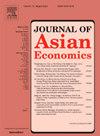人工智能应用如何影响服务业全要素生产率:来自中国的企业层面证据
IF 2.9
3区 经济学
Q1 ECONOMICS
引用次数: 0
摘要
二十一世纪,第四次工业革命兴起,在世界范围内掀起了一场新的技术革命。人工智能(AI)作为信息技术(ICT)领域的尖端通用技术,其影响力日益增强,与各行业的融合也越来越紧密。随着服务经济成为国民经济的重要组成部分,人工智能的快速发展为提高服务业全要素生产率提供了新的机遇。鉴于“服务经济”与“数字经济”的趋同,本文旨在利用企业层面的数据评估人工智能在服务业中的应用水平,并从理论和实证两个角度探讨人工智能影响服务业全要素生产率的具体机制。方法首先利用ces型生产函数进行理论建模,分析人工智能对服务企业的赋能效应和结构效应。接下来,以2010 - 2020年中国a股服务类上市公司数据为样本,通过文本分析构建衡量服务类企业人工智能应用水平的指标,计算服务类企业的全要素生产率。实证研究了人工智能应用对服务企业全要素生产率的影响,并利用双向固定效应模型检验了其异质性特征。此外,本文还探讨了研发投资和人力资本对全要素生产率的中介作用。结果表明,服务企业的人工智能应用水平与其TFP之间存在正相关关系。值得注意的是,人工智能应用对TFP提升的影响因行业、企业规模和所有权的不同而异。异质性检验表明,现代服务企业、中小企业和国有企业可以从实施人工智能中获得更显著的全要素生产率收益。此外,该实证模型成功地通过了内生性检验和鲁棒性检验。机制分析进一步表明,人工智能通过增加研发投入和优化服务企业内部人力资本配置来推动全要素生产率的提高。本文通过考察服务业人工智能应用与全要素生产率的关系,对现有文献做出了贡献。研究结果对政策制定者和服务公司具有重要意义,指导他们在促进服务业广泛采用人工智能方面的决策。从理论上系统地总结了人工智能影响服务企业全要素生产率的机制。在实证方面,运用基于机器学习的文本分析构建了服务业人工智能应用水平指标,细化了服务业人工智能应用微观层面的测度。此外,本研究促进了我们对人工智能的应用如何提高服务公司的全要素生产率,以及这种影响是否在不同类型的服务公司之间有所不同的理解。本文章由计算机程序翻译,如有差异,请以英文原文为准。
How artificial intelligence applications affect the total factor productivity of the service industry: Firm-level evidence from China
Purpose
The 21st century has witnessed the emergence of the Fourth Industrial Revolution, bringing forth a new technological revolution worldwide. Artificial intelligence (AI), as cutting-edge general-purpose technology within the information technology (ICT) sector, is increasingly gaining influence and integrating much more closely with various industries. With the service economy becoming a critical component of national economies, the rapid development of AI presents new opportunities for enhancing the total factor productivity (TFP) of the service industry. In light of the convergence between the "service economy" and the "digital economy", this paper aims to assess the level of AI application in the service industry using firm-level data and explore the specific mechanisms through which AI impacts the TFP of the service industry from both theoretical and empirical perspectives.
Approach
Firstly, this paper conducts the theoretical modeling with the CES-type production function to analyze the empowering effect and structural effect of AI on service firms. Next, using the data of China A-share listed service companies between 2010 and 2020 as a sample, the study constructs an index to measure the level of AI application of service firms by textual analysis and calculates TFP of service firms. Empirically, the paper investigates the impact of AI application on TFP of service firms and examines its heterogeneous characteristics using a two-way fixed-effects model. In addition, this work explores the mediating role of R&D investment and human capital in contributing to TFP.
Findings
The results show a positive relationship between the level of AI application in service firms and their TFP. Significantly, the impact of AI application on TFP promotion varies across different industries, firm sizes, and ownership. Heterogeneity tests reveal that modern service firms, small and medium-sized firms, and state-owned firms can achieve more significant TFP gains from AI implementation. Furthermore, the empirical model successfully passed both the endogeneity and the robustness tests. Mechanism analysis further shows that AI drives TFP improvements by boosting R&D investment and optimizing human capital allocation within service firms.
Value
The paper contributes to the existing literature by examining the relationship between AI application and TFP in the service industry. The findings hold significant implications for policymakers and service firms, guiding their decisions on promoting the widespread adoption of AI in the service industry. Theoretically, this work systematically summarizes the mechanism through which AI influences the TFP of service firms. Empirically, it constructs an indicator of AI application levels in service firms using machine learning-based textual analysis, refining the measurement of AI application at the microlevel in the service industry. Additionally, this study advances our understanding of how the application of AI improves the TFP of service firms and whether this impact varies across different types of service firms.
求助全文
通过发布文献求助,成功后即可免费获取论文全文。
去求助
来源期刊

Journal of Asian Economics
ECONOMICS-
CiteScore
4.70
自引率
9.40%
发文量
90
期刊介绍:
The Journal of Asian Economics provides a forum for publication of increasingly growing research in Asian economic studies and a unique forum for continental Asian economic studies with focus on (i) special studies in adaptive innovation paradigms in Asian economic regimes, (ii) studies relative to unique dimensions of Asian economic development paradigm, as they are investigated by researchers, (iii) comparative studies of development paradigms in other developing continents, Latin America and Africa, (iv) the emerging new pattern of comparative advantages between Asian countries and the United States and North America.
 求助内容:
求助内容: 应助结果提醒方式:
应助结果提醒方式:


